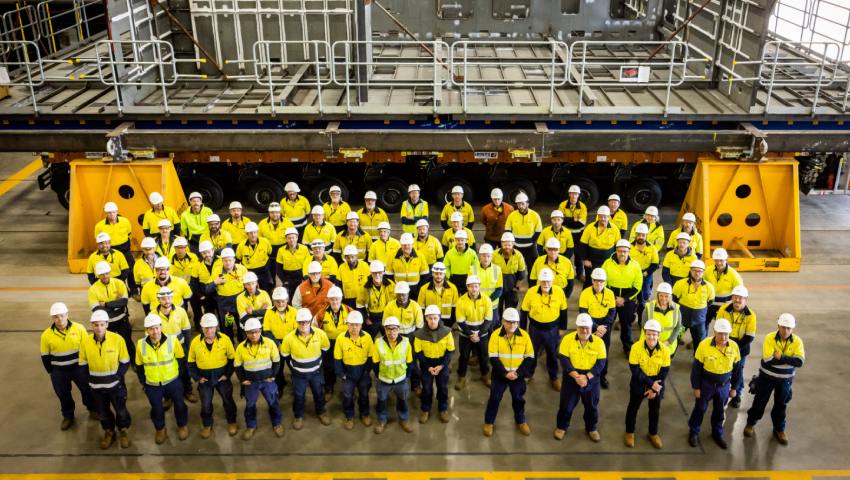The $35 billion shipbuilding program has achieved a major milestone, with the first steel prototype unit rolling off the production line.
To continue reading the rest of this article, please log in.
Create free account to get unlimited news articles and more!
BAE Systems Maritime Australia, the prime contractor for the SEA5000 program, has confirmed it has completed the structural manufacture of the first steel prototype unit for the Royal Australian Navy’s forthcoming Hunter Class frigate fleet.
The 217 square metre unit, produced at Osborne Naval Shipyard in Adelaide, compromises of over 28 tonnes of Australian steel.
The steel prototype has been moved from the shipyard’s primary manufacturing hall for the next phase of the production process, set to involve outfitting and consolidation with three other units as part of the first prototyping block.
The unit, which was the first to be blasted and painted, cut and constructed in the new shipyard, is designed for the middle of the ship, which will contain the officer’s accommodation.
“This is a significant production milestone for the Hunter frigate program and an important start towards establishing shipbuilding capability across the Osborne Shipyard,” BAE Systems Maritime Australia managing director Craig Lockhart said.
“Osborne is one of the world’s most technologically advanced shipyards, a purpose-built modern manufacturing facility built for the digital age to deliver next generation anti-submarine warships by a highly skilled Australian workforce equipped to use Industry 4.0 technologies.”
Lockhart said the manufacture of the first unit has established the “step-change” to previous shipbuilding programs, with the company’s employees testing the full productive capacity of the yard.
According to the managing director, this has enhanced the firm’s capacity to develop high quality ships through its pulse line process, which leverages robotics supporting high quality welds and zero defects.
“This ensures an enduring and uniquely Australian sovereign industrial capability that supports Australia’s continuous naval shipbuilding strategy for future generations,” he added.
As part of the SEA5000 program, BAE Systems Maritime Australia has been tasked with building nine next-generation anti-submarine warfare frigates.
The program is currently employing more than 1,300 people, including 35 apprentices and 26 graduates, and is tipped to create and sustain 5,000 jobs over the life of the program.
Steel for the prototyping phase, which commenced in December 2020, has already been procured from Bluescope AIS at Port Kembla, NSW and structural steel from Infrabuild in Whyalla, SA.
Approximately 40 subcontracts have been awarded to Australian businesses since the project commenced, supporting design and prototyping.
A further 20 contracts are expected to be awarded to support prototyping, including ship outfitting, gaskets, wholeship eyeplates, insulation and deck coverings.
[Related: BAE Systems Australia appoints new maritime sustainment director ]

 Login
Login







